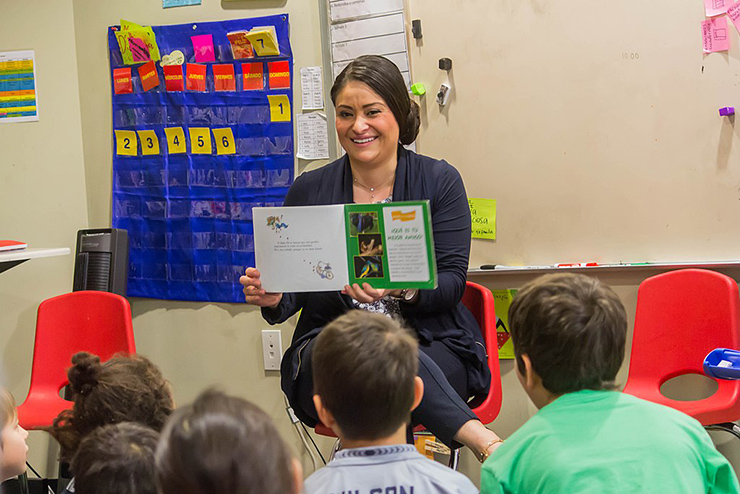New York City, Denver, Chicago, and other cities are urgently recruiting bilingual education teachers as the children of migrants enroll in school. Bilingual ed will doom most of these kids to failure. All too often it’s an educational ghetto, producing dropouts who can’t speak English and face a lifetime of poverty.
Non-English-speaking students should be given intense instruction in English when they first arrive at school and then mainstreamed to classrooms where students are taught only in English.
The educational establishment says stressing English competency is “xenophobic.” But immigrant parents deserve the truth, not political indoctrination.
They need to know that nationwide, only 4 percent of eighth graders and 3 percent of 12th graders with limited English proficiency are proficient in math and reading, according to the National Assessment of Educational Progress test scores. A staggering 80 percent have no grasp of either subject. Imagine the limited future they have.
New York advertises a Parents’ Bill of Rights, telling parents of English language learners that they can keep their children “continuously enrolled year to year” in bilingual education. Truth is, bilingual education is not a “right.” It’s a wrong.
Buffalo is one of the poorest cities in the U.S., and poverty there afflicts native-born residents and migrants alike. Yet students in bilingual programs are less than half as likely to graduate as students taught in English. Learning English is the civil rights issue of our time.
For the first time ever in American history, 15.5 percent of people are foreign born, more even than in the 1890s and the 1910s. Now is the time to get language instruction right, not double down on failure.
Bilingual education creates linguistic chaos in the classroom. Here’s how fourth-grade instructor Miriam Sicherman teaches her dual language class at the Children’s Workshop School in Manhattan, as reported in Chalkbeat.
“For a recent lesson on internet safety, she translated her presentation into Spanish and Russian ahead of time for her five newcomer immigrant students who speak those languages, but then used her phone to look up words like ‘password’ and ’email address’ to respond to their questions. In an eight-hour school day, she repeats this process over and over again.”
Bottom line, the English-speaking, Russian-speaking, and Spanish-speaking students each get a fraction of her time and have to wait while she speaks to the rest of the class in languages that are gibberish to them. Sicherman uses her pocket translator an average of 25 times a day to answer questions posed in a foreign language while most of the class has no clue what she’s saying. Crazy.
Even crazier, New York City is trying to teach phonics to kindergarteners before they know English. One dual language kindergarten teacher’s assistant questions how a girl in his class from Venezuela who has “extremely limited understanding of the English language” will fare. How do you recognize a word by sounding it out if you’ve never heard the word before?
The New York Times’ Nicholas Kristof recently reported soaring test scores in Mississippi since the state adopted phonics. But in Mississippi, only 4 percent of students live in homes where a language other than English is spoken. In New York, that figure is 35 percent. To make phonics work here, children need to learn English first.
Other countries are investigating how best to teach migrant children and the impact of migration on native-born students, a topic that is taboo in the U.S.
Chile experienced a huge influx of migrants from Venezuela and Haiti. According to findings in the Economics of Education Review in December 2022, the arrival of Haitian students who did not speak Spanish depressed the standardized test scores of native-born Chilean students. The inflow of Venezuelan students had less impact because they spoke the language of instruction and did not create language chaos in the classroom.
In Denmark, a higher share of migrant children in classrooms resulted in lower scores for all students because “the teacher’s attention and time are diverted” to help those who can’t speak the language. Similar results have been reported for Germany and Sweden.
Bilingual education is failing nearly everywhere.
In the U.S., immigrant parents should demand their children be taught in English only. In this country, English is the language of success. That’s what parents want for their children, political correctness be damned.
COPYRIGHT 2024 CREATORS.COM

Leave a Reply